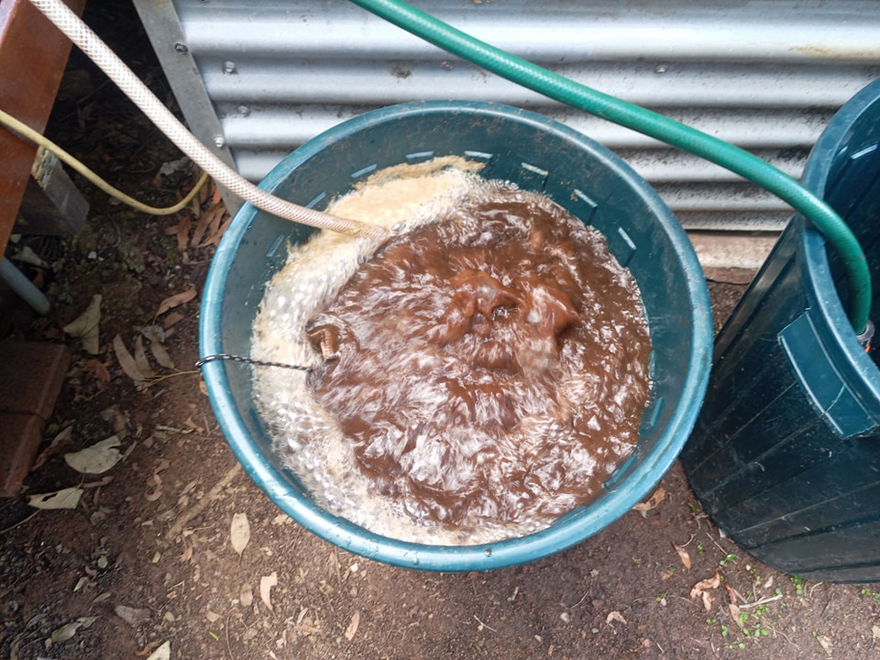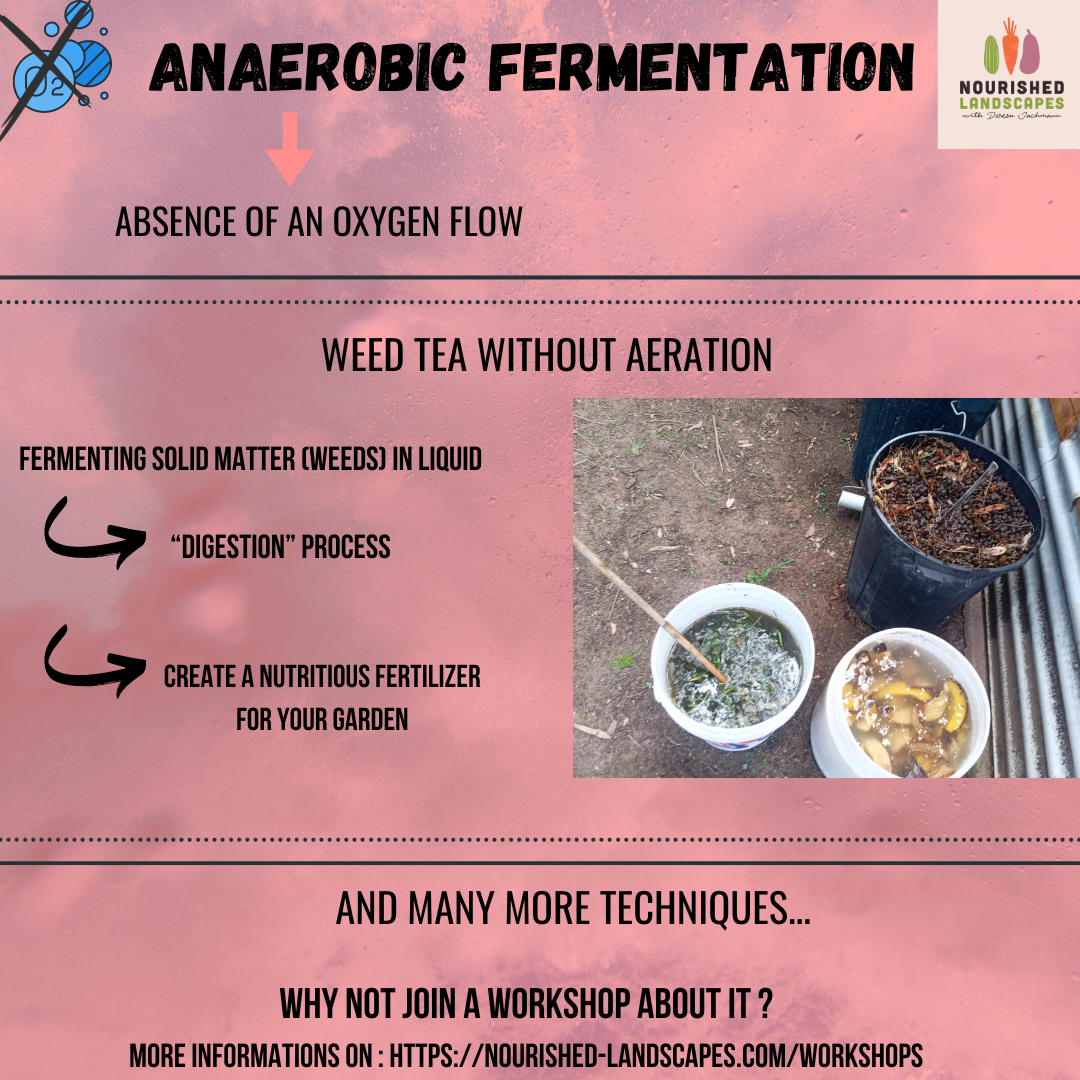Garden Ferments for Making Fertilisers and Soil Conditioners: A Guide to Garden Alchemy

Garden Ferments for Making Fertilisers and Soil Conditioners: A Guide to Garden Alchemy
If you’re looking for a sustainable and effective way to boost your garden’s productivity, garden ferments are an excellent option. By using anaerobic and aerobic fermentation techniques, you can create rich, homemade fertilisers and soil conditioners that improve soil health and plant growth. In this post, we’ll explore what anaerobic and aerobic fermentation are, the pros and cons of each, and how to make and apply these ferments in your garden.
What is Anaerobic Fermentation?
Anaerobic fermentation occurs in the absence of oxygen. One of the most popular methods is the Bokashi method, which involves fermenting kitchen and garden waste using effective microorganisms.
Or the bucket fermenter with lid, which we you at Bloomfield’s Homestead.

Pros:
- Quick Process: Fermentation typically takes just 2-4 weeks.
- Wide Range of Materials: You can include a variety of kitchen scraps, including small amounts of meat and dairy.
- Nutrient-Rich Output: Produces a nutrient-rich liquid fertiliser (Bokashi tea) and pre-compost material.
Cons:
- Odour: The process can produce strong smells if not managed properly with the Bokashi method. The bucket method will definitely produce a strong smell, that could irritate your neighbours. So keep a lid on.
- Needs Burying: The fermented material needs to be buried in the garden or added to a compost pile to fully break down.
What is Aerobic Fermentation?
Aerobic fermentation requires oxygen and involves making compost tea by steeping mature compost and or worm castings in water and aerating it to encourage the growth of beneficial microorganisms.

Pros:
- Beneficial Microorganisms: Promotes a high population of beneficial aerobic microbes.
- Versatile Application: Can be used as a foliar spray or soil drench.
- No Strong Odours: Generally produces a less pungent smell compared to anaerobic methods. With the proper air pump there will be next to no smell. Our brew has a light sweet aroma to it.
Cons:
- Time-Consuming: Requires continuous aeration for 24-48 hours.
- Short Shelf-Life: Compost/casting tea must be used immediately for maximum effectiveness.
How to Make Anaerobic Fertiliser (Bokashi Method)
- Collect Materials: Gather kitchen scraps (fruit and vegetable peels, coffee grounds, small amounts of meat and dairy) and optional garden waste.
- Chop and Mix: Cut the scraps into small pieces. Mix in garden waste if desired.
- Prepare the Container: Use an airtight container, such as a bucket with a tight-fitting lid, can add a falls floor for draining the liquid, that is optional.
- Layering: Place a layer of scraps in the container, sprinkle with Bokashi bran (a mixture of bran, molasses, and effective microorganisms), and repeat layers until full.
- Seal and Store: Press down the materials to remove air pockets, seal the container, and store in a cool, dark place for 2-4 weeks.
- Fermentation Liquid: Drain any liquid produced (Bokashi tea) periodically, dilute it with water (1:100 ratio), and use as a fertiliser.
- Final Fermentation: After 2-4 weeks, bury the fermented material in the garden or add it to a compost pile.
How to Make Aerobic Fertiliser (Compost Tea)
- Collect Materials: Use well-matured compost that includes a balanced mix of green (nitrogen-rich) and brown (carbon-rich) materials.
- Prepare the Container: Fill a bucket or barrel with water (rainwater or dechlorinated tap water is preferred).
- Add Compostand or worm castings: Place the mature compostor castings in a porous bag (like a burlap sack) and submerge it in the water. Use a ratio of about 1 part compost to 5-10 parts water.
- Additives (Optional): Add a tablespoon of molasses or sugar to feed the microorganisms.
- Aeration: Use an air pump or aquarium bubbler to aerate the mixture continuously for 24-48 hours.
- Strain and Use: After aeration, strain the liquid to remove solids. Use the compost tea immediately as a foliar spray or soil drench, diluting if necessary (1:10 ratio) but not essential.
Application Tips
- Anaerobic Ferment (Bokashi): Bury the fermented material in garden beds or compost piles. It may take a few weeks to fully break down in the soil.
- Aerobic Ferment (Compost, castings Tea): Apply directly to plant leaves and soil. Use it within a few hours of preparation for maximum microbial activity.
In Summary
By utilising both anaerobic and aerobic fermentation techniques, you can create rich, homemade fertilisers and soil conditioners that boost your garden's productivity and sustainability. Not only do these methods improve soil health, but they also recycle kitchen and garden waste, reducing the amount of waste sent to landfill. And allowing you to be more self-reliant by being able to make all your own fertilisers and soil conditioners.
Doreen, from Nourished Landscapes, has been making soil amendments, liquid fertilisers and soil conditioners for years now.
If you would like some hands on learning and see a proven fermentation station set up then come to Bloomfield’s Homestead, where Nourished Landscapes runs the Garden Alchemy workshop a couple of times per year. Receive proven recipes included in the workshop instruction manual. Learn what pump to get and where from. Set yourself up to brew all your own fertilisers and soil conditioners, enabling you to be more self-sufficient and save money as well.
Happy gardening!


0 comments
Leave a comment
Please log in or register to post a comment